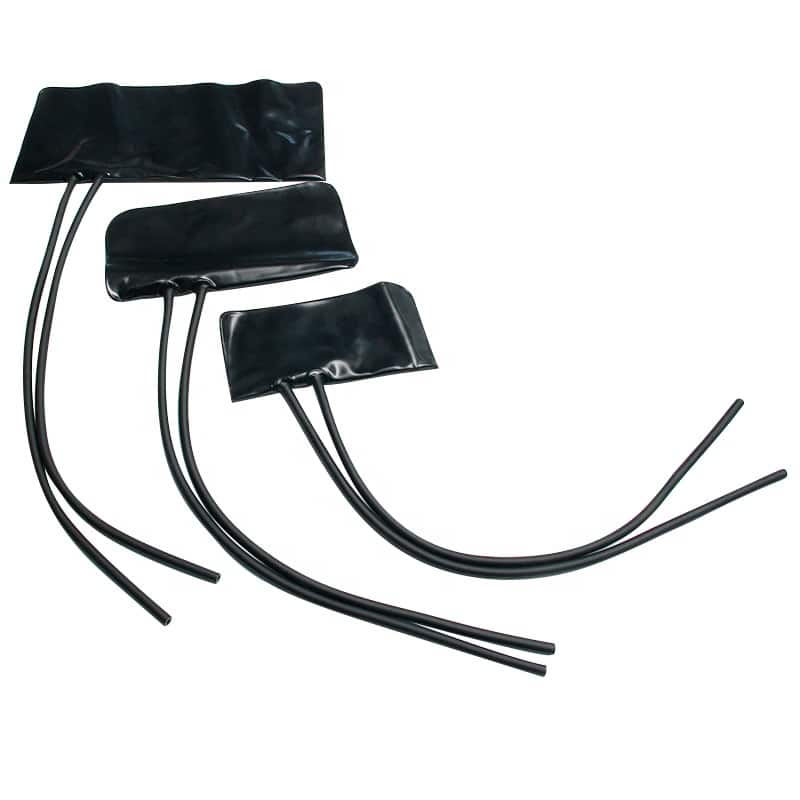What is an Air Wedge and What is it Used For?

An air wedge is an inflatable, wedge-shaped bag made of vinyl, ballistic nylon, and other strong, flexible textiles. This bag lies flat, allowing it to be slipped under heavy objects, between objects that need to be moved apart, and between a moving component and an unmoving surface (like a locked car door). By slowly inflating the flat bag, it can allow users to, for instance, access the lock mechanism of a car door.
While this is the most common use for an air wedge, it is far from the only one. In fact, the versatility of air wedges allows them to be used in a variety of unexpected ways.
Let’s explore some of these applications.
An Air Wedge Can Be Used When Locked Out of a Car
A good quality air pump wedge is the perfect auto lockout tool. This tool is designed to wedge between the door and weather stripping to make an opening large enough to insert a car-unlocking tool. The air pump wedge should be large enough to allow tools to be inserted and the manual lock mechanism to be accessed. An air wedge like this is a common tool among roadside vehicle assistance services.
But did you know that air wedges can also be used in other automotive applications? For instance, they can be used to create a gap for inspecting or repairing components in tight spaces, such as under the hood or beneath the car.
Medical Uses for an Air Wedge
It is not uncommon to see air wedge technology used in a medical setting, like a hospital or skilled nursing facility. An air wedge can be used to adjust a patient’s head, chest, and neck positions. As a medical tool, it is convenient and versatile, making it ideal for use in many patient care settings. Using the cushioning properties of the inflatable chamber, patients can enjoy improved comfort and function during treatment.
In addition to these uses, air wedges can also be used in physical therapy and rehabilitation. They can be used to support patients in various exercises and therapies, helping them regain strength and mobility.
They Can Also Be Used in Your Home
An air wedge can be used to lift up furniture or to adjust cabinet heights. A good air wedge is made of rubber and nylon, which are both flexible and have a textured surface. Often, an air wedge is placed at the base of a cabinet or drawer. The air wedge can work to safely lift the furniture from its position.
Beyond these uses, air wedges can also be used for a variety of home improvement and DIY projects. For example, they can be used to level appliances, align doors and windows, or even as a temporary door stopper.
Another alternative is the air shim, a durable air wedge made of fiber-reinforced, non-marking material. A shim like that can lift up to 300 pounds, making it ideal for doorway installations, appliances, and window spacing. Any construction project that involves moving heavy objects with care and precision could use an air wedge.
The Making of an Air Wedge
Vinyl Technology specializes in the type of industrial sewing that is necessary for making products like this. With advanced technology like RF welding, we can make an unlimited variety of sewn or welded products. But what does the process of making one actually involve?
First, the materials are selected. The choice of materials is crucial, as they need to be strong, durable, and flexible. Vinyl and ballistic nylon are commonly used due to their strength and flexibility.
Next, the materials are cut into the shape of a wedge. This is done using precise cutting tools to ensure the shape is perfect.
The cut materials are then sewn together to form the basic shape of the air wedge. This is where our expertise in industrial sewing comes into play. The seams need to be strong and durable to withstand the pressure when the air wedge is inflated.
After the sewing process, the product is then subjected to RF welding. This process uses radio frequency energy to heat and bond the materials together, creating airtight and waterproof seams.
Finally, the item is inflated and tested to ensure it functions as expected. This includes checking for any leaks and making sure the wedge can withstand the pressure when fully inflated.
Get in Touch
Interested in learning more about our manufacturing process? Get in touch with us today. We’re always happy to answer any questions and provide more information.
Related Blogs:
- How is Industrial Sewing Different From Other Kinds of Sewing?
- The Top 5 Uses for a Hazmat Suit
- The Top 4 Industrial Fabric Structures
- What is a Gravity Suit and How Does it Work?
- What is Textile Engineering and How Does it Work?
- Five Things you Didn’t Know About Life Vests
- The Top 3 Military Fabric Uses (That Aren’t Clothes)
- What is Laminated Fabric and How is it Used?

